Artist Tips: Rafael Anton Irisarri
How to make memorable ambient music.
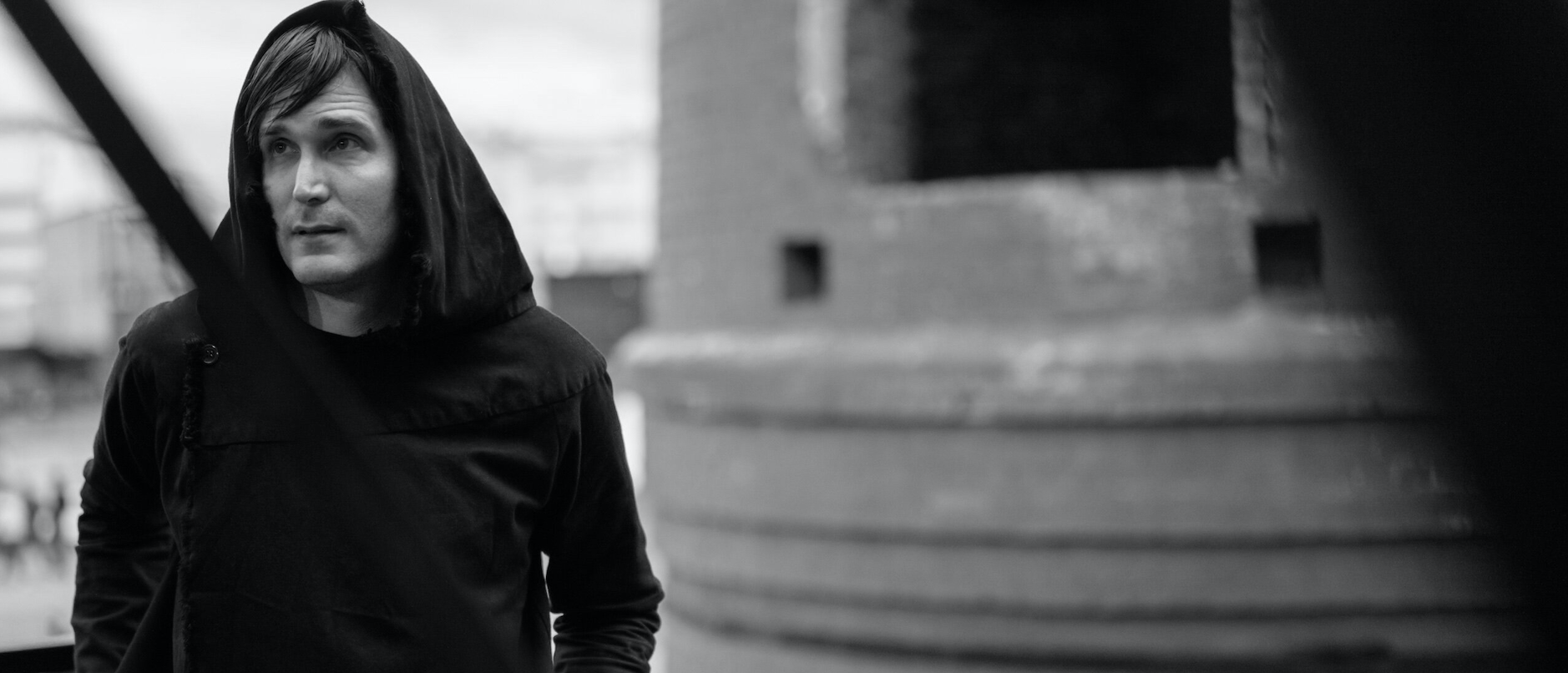
Artist Tips: Rafael Anton Irisarri
How to make memorable ambient music.
Rafael Anton Irisarri’s new album, Peripeteia, is on its way via Dais Records. The eight-track effort sees the American composer incorporating the metal and classical components of his youth into an ambient palette he’s dedicated more than a decade of his life to. “My previous works internalize any exterior forces or circumstances, while trying to make sense of the world,” he says. “Peripeteia reverses that approach, focusing on the personal in order to tell a wider human story.”
Irisarri was born in the Caribbean, specifically the island of Puerto Rico, and grew up between Florida, New York, and San Juan. He began his music career in Seattle during the 2000s, first making music as The Sight Below before having enough confidence to switch to his birth name. Whatever the alias, he uses music as a means of “coping with the fact that I didn’t seem to belong anywhere,” he says. “To this day, I still feel like this sometimes.”
After Daydreaming, a haunting debut full-length of atmospheric piano (supposed to be released on the now-defunct Mille Plateaux), he’s put out most of his music on Lawrence English’s Room40 and Mexico City’s Umor Rex. His recordings lean on field recordings, bowed guitars, strings, and electronics to create dense clouds of blurry, hypnotic sound, often doused in distortion and with a melancholic edge.
As he prepares for the Peripeteia‘s release, Irisarri explored the core principles of his ambient production techniques. He spoke to XLR8R from his studio in New York, from where he also runs Black Knoll, a sound studio specializing in analog mastering for digital and vinyl. His tips cover the mistakes often made by aspiring ambient musicians, the tools you can use, and important realizations if you are to make what he deems “memorable” ambient records.
Foreword: General Thoughts on Ambient Music
Ambient is a deceptively simple style of music. On the surface, it seems like anyone can do it at home. This is true to a certain extent (it’s not hard to do at all from certain technical perspectives) but making memorable ambient is much trickier than it sounds. It’s not so much about the individual elements—the sound quality of the recording, the performance of the musician, or the musicality of the piece itself—but rather the sum of all those parts working in tandem with the concept behind the piece of music. That’s why something like The Disintegration Loops by William Basinski is a masterpiece and the YouTube 800%-percent-slowed-down-videos-wasteland total rubbish. This characteristic makes ambient an easy genre to dismiss as either amateurish or pedantic.
Making ambient music requires an entire different set of listening skills—deep listening, as coined by the late great Pauline Oliveros. It’s about focusing on areas most people don’t, and bringing those areas to the forefront, and the recording process (tracking, mixing, mastering) itself is as important as the musical notes or sounds in the composition.
If we use the aforementioned album by Basinski as an example, the process of the tapes disintegrating on the reels when he created the music almost two decades ago is integral to the arrangement and the feeling of the piece. In 2011, the Wordless Music Orchestra performed “Dlp1.1” live at the Metropolitan Museum of Art and they even adapted the “disintegration” process into a musical score/notation. In the recording of the live performance, you can hear the musicians’ instruments disappearing as the piece progresses.
I liken the process of ambient music to stand-up comedy: it’s one thing to tell jokes to a couple of drunken friends at a party and another to build an entire routine that works with a crowd at a comedy club. With ambient, it takes a lot of time to find your own sound and learn to communicate complex ideas in a musical language that is minimalistic and shy by nature.
Also, none of my advice here should be taken as a “this is the way to always do things.” While the road you take might influence the musical result, ultimately, the questions to ask yourself are: does the track sounds interesting, beautiful, or innovative? Am I satisfied with it?” There’s more than one way to cook an egg, and I hope these ideas can facilitate this process.
Before You Break the Rules, You Must Learn Them
As artists, we must aspire to break the norm. We want to create something different from what came before us, and sometimes that requires us to go about things in a way that is contrary to how it has always been done. But it’s also important to know the rules that you’re breaking, or are going to break.
It’s easy to think that knowing and following the rules will make you sound like everyone else, but that’s not true. There is always the individual touch of the artist, musician, and producer. You can even have the exact same equipment and set up as “X” artist and play the exact same notes through the same rig, and it will still sound different to the way they recorded it. You can think of the fundamentals as a scaffold to hang everything else off, but the good stuff will come when you’ve left it all behind and do your own thing. We are all using the same 12 tones in western music, it’s all about how you combine, or don’t combine, them in interesting ways.
I’m not a trained musician, but I’ve developed a lot of knowledge of music theory in my time in music, although its limited compared to my peers who went to college, at great music schools like Berklee College of Music in Boston or otherwise. I am one hundred percent self-taught and have spent a considerable number of years on my own learning music theory and harmonic principles. When I started playing music, I actually relied on friends to pass along musical knowledge (in lieu of “real” musical school training). Then in my teens, I’d spend hours reading songbooks I’d buy at Sam Goody, watching guitar videos from ’80s rock & rollers on VHS, and playing along to records. Eventually, I got a hold of different music theory books at the library (my mum was a librarian, so she would order books for me that were taught in college) and would spend hours reading and learning.
Knowing things like the circle of fifths helped me when improvising with other musicians, and it also helped me when I started to play around with samples, as I started making electronic music in the ’90s in my bedroom. It taught me things like: “Oh this cool bassline I’m sampling is in a C major scale, and this awesome guitar sample is in C minor scale, so if I transpose the pitch of the guitar sample by 400 cents up to make the sample E minor, it will fit really nicely with the C major scale on the bass and sound musically coherent and in tune.”
Nowadays, you can find tutorials online on YouTube—and the subjects range from music theory to music technology, and it’s a wonderful thing having access to all this information for free. You can also find your favorite musicians doing online workshops and even doing tips or full-on masterclasses on social media like Instagram. (Just today, I watched my buddy Telefon Tel Aviv do an entire workshop on designing drum sounds!)
Knowledge is incredibly important, because we live in an era in which ignorance is praised and facts are discredited. Musical knowledge should be celebrated, not frowned upon. The great late Mark Hollis once said: “Before you play two notes, learn how to play one note, y’know. And that, it’s as simple as that really. And don’t play one note unless you’ve got a reason to play it.”
Learning music theory will not only expand your vocabulary but it will also help you understand why some of the music you love works in the way it does and hits you in a certain way. It will help you understand at a deeper level what makes that song you love so great. In no uncertain terms, it’s a valuable use of your time.
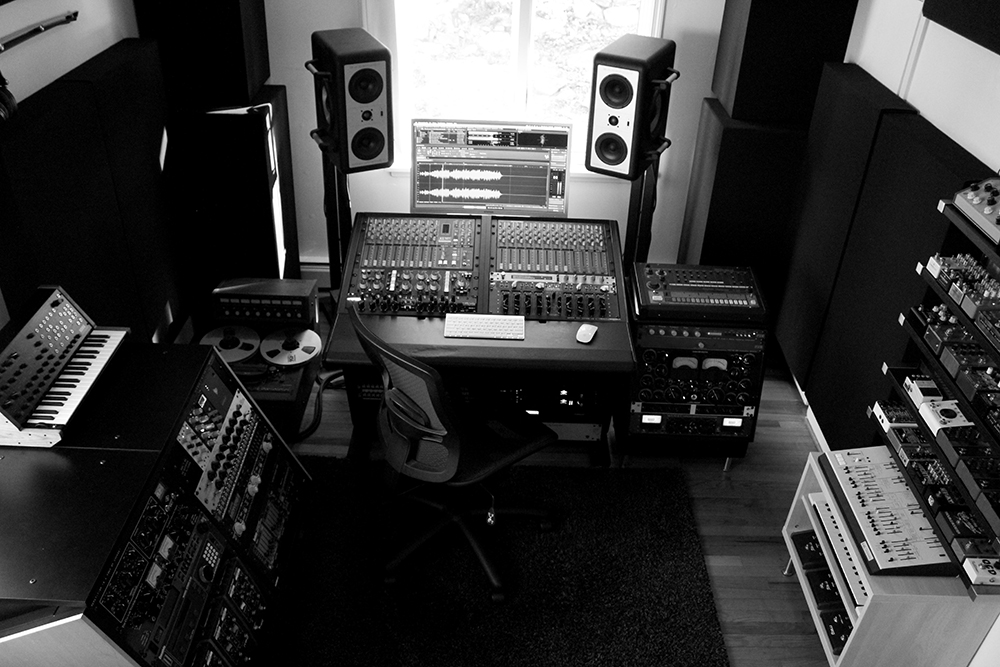
The Studio is the Ambient Musician’s Instrument
Ambient music is predominantly created in the studio. Unlike, for example, a punk rock band, where the musicians will get together at a rehearsal space and write a song using their respective instruments (or perhaps even write a song during a soundcheck while on tour), ambient is written and developed inside a studio, where an individual(s) has an array of different tools at their disposal to create sounds.
What I mean to say is that when I’m working on music, it is never about the particular instrument I’m playing, but how the instruments, effects, mixer, etc. become the source for the various sounds I’d improvise with and use as the basis for a composition.
One of the most effective ways to work, I find, is to build all your sound sources first—whether individual sounds, samples, or short or long loops. Create the building blocks to which you’ll start your workflow, much in the way an architect does their craft. I have amassed many hours of field recordings, for example, hydrophone recordings of water, many forest walks, birds, things like that. I can use those as the foundation of some ideas.
Keeping processes organized, and compartmentalized, helps my focus, much better than trying to think of a melodic line, for example, whilst simultaneously programming a synthesizer to develop the sound for the particular line. The technical processes, like creating a sound from scratch, are better addressed separately. Of course, there are times when you build a cool sound on a synth and immediately come up with a musical idea because of it. When this happens, I just go with the flow. Ultimately, inspiration is more important than the X or Y method of writing.
One little trick I love to do whenever I’m writing is to take a field recording and map the sounds’ transients to MIDI notes in Ableton Live and experiment with the naturally-occurring rhythmic patterns of a field recording, utilizing those as the rhythmic foundation. Another thing I do is find a field recording with a tonal element (for instance, the drone created in the bathroom of a train cart) and load that into a sampler, utilizing it as the sound source, then running it through different elements like filters and effect units. A lot of the time in the studio my job is spent just managing the results of hours of improvisation.
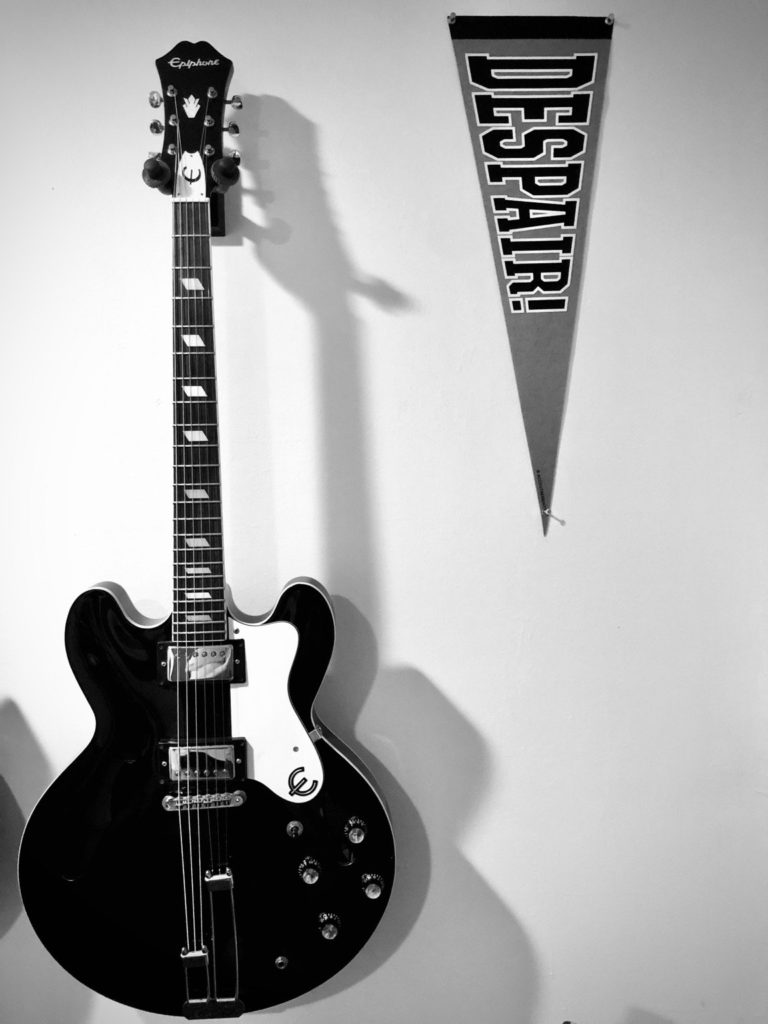

Document Everything
There is nothing more frustrating than arriving at the most beautiful loop you’ve ever heard and realizing you’re not set up to record it, which means it’ll be lost forever. Make a habit of being prepared to record and hitting “record” before you start doing any improvisation. I feel that whenever I’m improvising, lots of unexpected things can happen; music leaves your brain and goes to certain places, and sometimes you just have to set up the machines and let the experiment run its course. Sometimes it is just a matter of sitting back and letting the sound unfold on its own.
Before I touch anything in the studio, I make sure everything is patched correctly so I can record the results of an improvisation. I check to make sure everything is turned on. I make sure the signal flow is working so the Digital Audio Workstation, tape machine, or portable recorder is capturing the sounds I will generate, and that the gain staging is adequate so that there is no clipping or unwanted distortions. The signal-to-noise ratio must also be adequate, because you don’t want to end with a recording that was captured so low that all you hear is the tape hiss or machine noise—unless that is what you are specifically rooting for!
Speaking of improvising: last year when I was working on Peripeteia, I was messing around with an instrument called Metaphysical Function on Native Instruments’ Reaktor. One of the cool things about Reaktor is it lets you record whatever you are doing directly to your hard drive. So I remember sitting with it for a few hours and capturing many cool moments. Some of it ended up in moments during the album, whilst other sections of the improvisation I saved as part of my own library. It came in really handy to have this, as I was recently working on a film and one moment in the improvisation matched this particular scene’s mood rather well, so I ended up using it in it. This is why it’s so important to document everything you do, because you never know when you can use it.
Embrace Limitations as Part of the Creative Process
I spent my childhood in a single-parent working-class home in San Juan, Puerto Rico (that Caribbean island “surrounded by water. Big water. Ocean water”). Growing up poor meant we had to get creative with different aspects of our daily routine—to figure out how to stretch out our money to make it last until the next pay-check. This experience wired me to think differently, to accept limitations as not a roadblock, but rather an opportunity for creative thinking.
Instead of thinking: “Oh, I could make this sound much better if I had X piece of gear,” the questions I’d ask myself were: “What can I make with the three pieces of gear I currently have?” Technically-speaking, I wasn’t a gifted instrumentalist—I could play enough guitar and bass to perform with a few punk and reggae bands when I was a teen, and I can barely play instruments with a proper technique now. But I’m able to identify and adapt to the situation, which is an important skill for any musician making improvisational music, like ambient.
Flexibility and being able to understand your own shortcomings will help you develop around those, and those limitations will eventually form part of your creative process.
When I first started playing guitar with a bow, it stemmed from the fact I couldn’t find a cello player at the time to add a line to a song I was working on. I didn’t want to use string samples from libraries, so I decided to try bowing on the guitar, just to hear what it’d sound like. I’ve never played a bowed instrument before that, so I had no idea how to even hold the bow. Thankfully, we had the internet, so a few YouTube tutorials later, and I learned the “bunny” position. It didn’t feel very comfortable on a guitar though, so I developed my own way of holding it, which in turn contributed to the way I worked; long sustained notes as opposed to rapid movements on the strings, only bowing on the top or bottom strings for single notes, and utilizing a looper to create chords.
It also made me choose the type of guitars I wanted to play and record with, as I found some models were easier to play with a bow than others, and thus it shaped the overall tone. I adapted the music to my lack of “proper” bowing technique. I didn’t try to play, for example, “Fratres” cello string crossings on a guitar, but rather things that were more manageable at my skill level and thus sounded good as a result.
Always question whether you really need X piece of equipment to make music. It’s not always easy because we live in an era in which we are constantly bombarded by gear advertisements that create artificial “needs.” “Gear acquisition syndrome” is something we’ve all struggled with at different points in our lives. Seeing others utilize a piece of equipment and thinking: “Oh, if I had that, maybe I could sound better,” or reading online X company telling you you need their latest VST plug for “warmth” or “3D image” etc. It is all capitalism-driven marketing and designed to play on your own insecurities to make you spend money on whatever product is being pushed. A few of my favorite artists have done entire records utilizing nothing more than GarageBand (and their native plugs) to record and mix. Sometimes you see people dissing “Ableton Ambient,” as if making a track using whichever DAW makes it more or less legitimate. It’s all silly gatekeeping. Making interesting music is never about the equipment but about the ideas and inspiration.
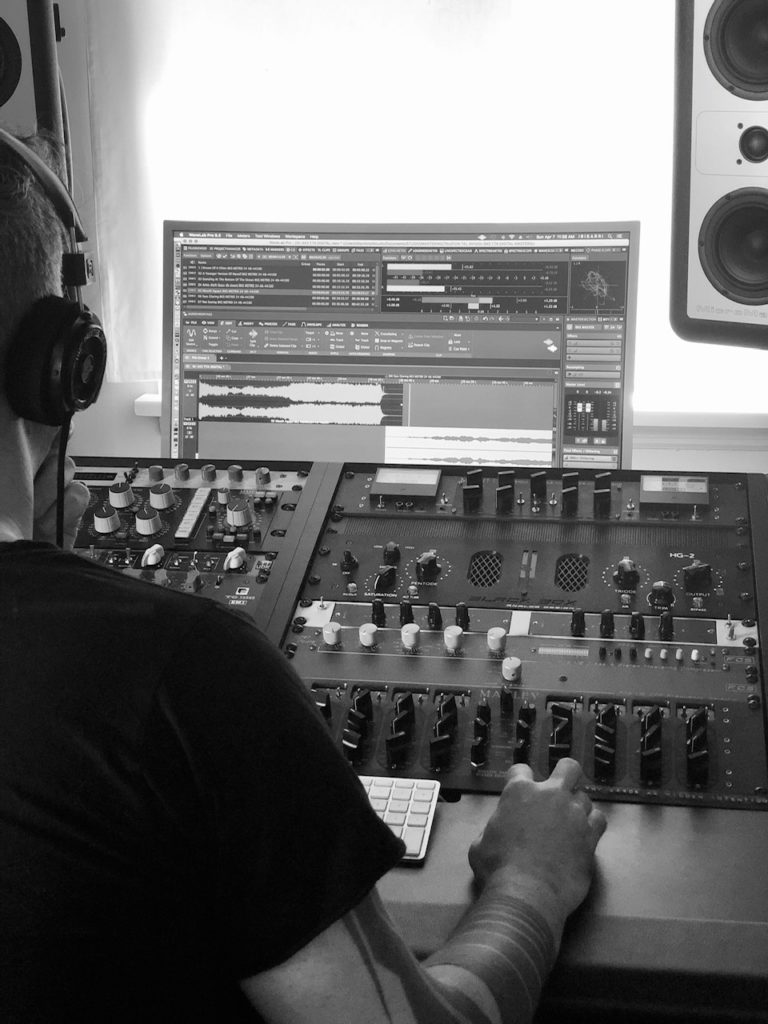
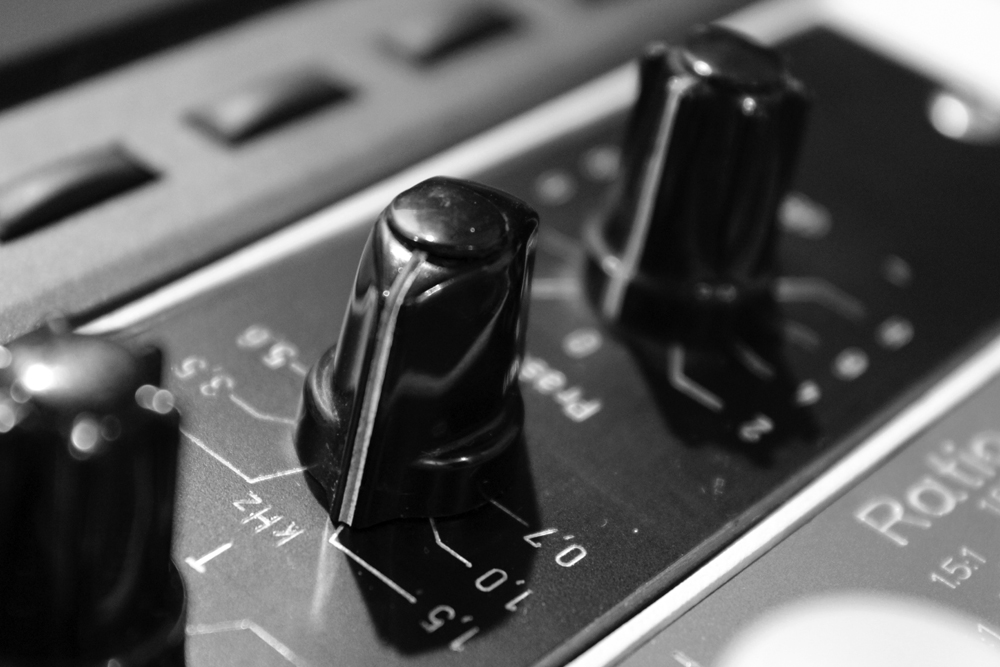
Form and Function are Key
Don’t automatically throw an EQ, compressor, limiter, or an effect on every channel. Listen to the actual sounds and utilize different tools, like a frequency analyzer or stereometer, for example, to see what actually needs to be addressed. Be selective. Do you really need a high-pass or low-pass filter?
Before you make any decisions, listen and analyze what you are doing, and think about the function of each part. For example, is the part a rhythm with lots of transients? Does it provide a foundation for the song? Or does it function more like a layer? Is it a main melodic element or is it a textural thing that contributes to the totality of the mix when combined with other elements? You’ll find that by understanding form and function, and thinking about this more deeply, your mixes will improve significantly.
A few years ago, I was working on Steve Hauschildt’s first album for Ghostly at Black Knoll and we were utilizing an 808 drum machine. The original 808 has independent outputs for each section (like bass drum, snare drum, etc). So we’d record everything on different channels. One thing I’d notice is each independent channel would have certain frequencies you’d not normally hear in that sound’s range, for example the clap would have a bunch of low end that’s hardly audible but there.
Many producer’s first instincts would be to apply a high-pass filter and remove all that low-end information. But my approach is always to work as an ensemble. How does that low end in the clap interact with the low end of the kick drum? Does it help to shape the overall sound and tone of the drum machine? It sure did in that case, so a “typical” thing in the studio (like adding a high-pass filter) was unnecessary and detrimental to the overall sound we wanted to create.
One of the very first things I do when I’m starting to work on a mix, either for another artist or myself after creating stems, is to move faders and find a balance just using faders only, no other adjustments. I listen to my initial balance to hear which things stick out, which things clash, and what feels good. If some areas sound cluttered, sometimes it could be as simple as muting a channel or as complex as changing the arrangement of a part so that it works better musically, and thus will naturally fit better without touching a single EQ.
Of course, if you are mixing your own music, you may already be able to do this as you write the track. Even if you are writing/mixing your own, it’s a good exercise to hear how elements sound against each other before starting to make EQ, compressor, limiting decisions. So whenever you are working in the studio on a track, listen to it as a whole, as a group of sounds played together. Does it sound correct to you?
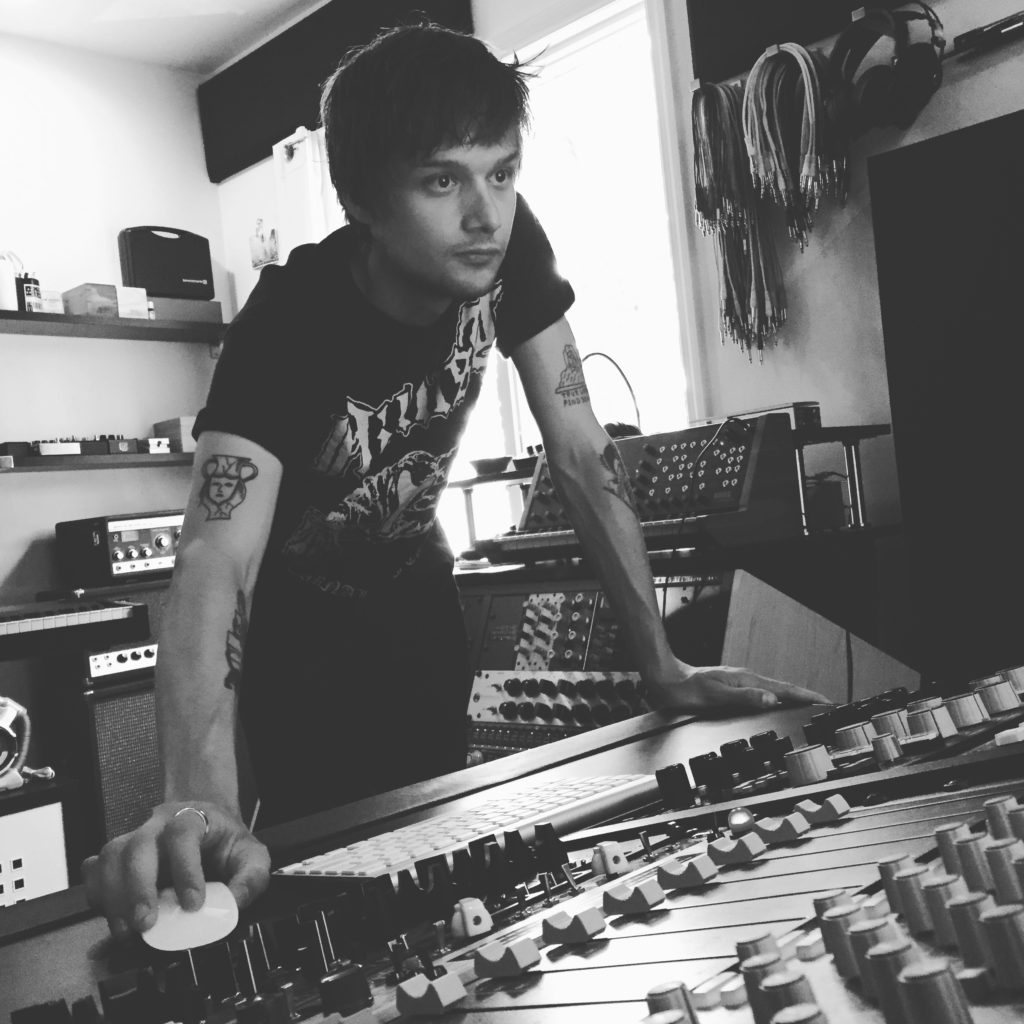
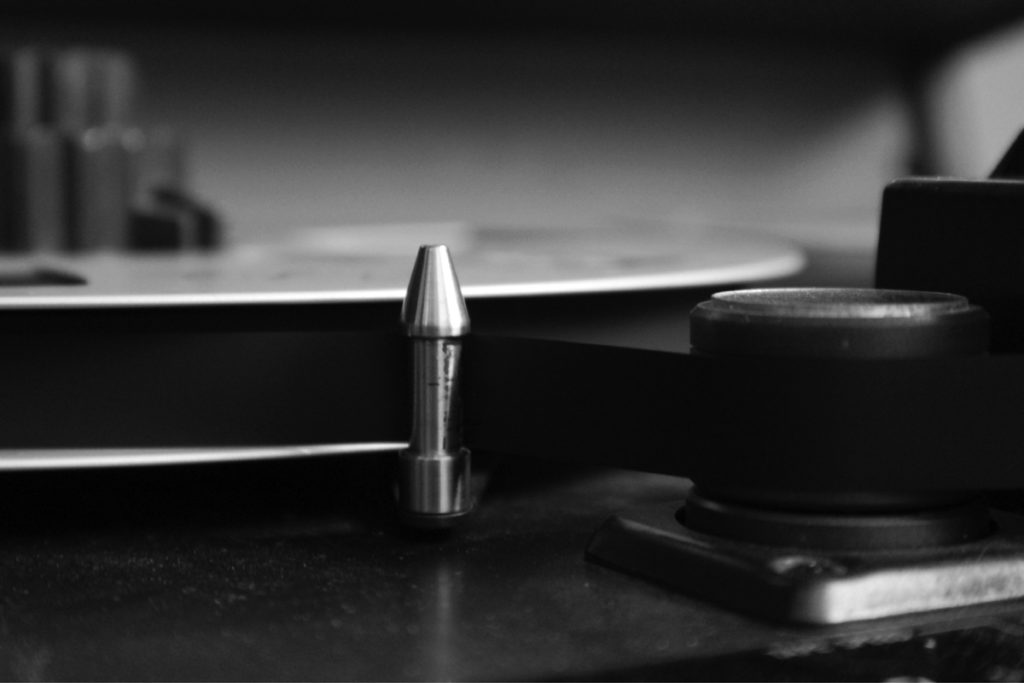
Be Selective About Who You Work With, and What You Share
I run Black Knoll Studio, a mastering house in New York. We’ve had some really good projects come through our studio over the years, from Ghostly International acts like Telefon Tel Aviv and Galcher Lustwerk, to Kranky stalwarts like Loscil, Windy & Carl, and Benoit Pioulard.
These projects are all special, but are not necessarily the studio day-to-day. We get countless independent artists from all styles and genres, but many up-and-coming ambient musicians. My approach is always to try and help everyone produce and thus, sound better, but there is only so much that I can do. A master is only as good as the mix, a mix only as good as the recording, the recording only as good as the production, the production only as good as the arrangements, and the arrangements only as good as the composition.
I operate in the studio with blunt honesty, as I don’t want to waste a potential client’s time or money on something that mastering is not going to fix (for example, a lackluster production or uninspired sound design). It’d be extremely dishonest of me to “sell” someone on mastering as the solution to a problem that only they can solve. I’ve received many recordings where I’d tell the client, “Look, this is not there yet, perhaps you should look into X, Y, or Z areas and take your time addressing X problems I hear on your mixes.”
While it is important that as an up-and-coming artist you get your name out, it is equally important to polish your craft before you put yourself out there. There is an insane amount of content available on a multitude of platforms in this already saturated music market. Take your time to develop ideas before deciding to release into the world. It takes a certain degree of self-control: as humans, we all crave feedback from others. We do this all day long, whether spouting our opinions on social media or posting pictures of whatever we see to obtain validation online. We shouldn’t do this with music, too. There’s a certain degree of social responsibility into what we do as artists. Self-criticism and introspection is a relevant part of your growth as an artist. Again, take your time.
As an artist myself, I seldom master my own music. I relish having that extra pair of ears listen to my creations, opine, and give me some feedback. This always helps and sometimes the engineer spots something I didn’t. It’s a system of checks and balances. Separation from the work adds to this concept: stepping away from something you are working on and hearing how it sounds a day after, a week after, a month after. Does it still captivate your attention a month later or do you think what was I thinking?
On that note, I’m also careful about who works on my music, in particular the mastering engineer. An impressive array of expensive equipment—sometimes a piece of gear that costs as much as a luxury car—means nothing if the engineer doesn’t understand the content or the artist’s intention. I wouldn’t want, for example, the same engineer who worked on the latest EDM atrocity touching my music; it just wouldn’t be right for me. Thus, I have built close relationships with a few engineers that suit my aesthetic, understand the vision behind my music, and know how I intend it to sound. I’d suggest you do the same.
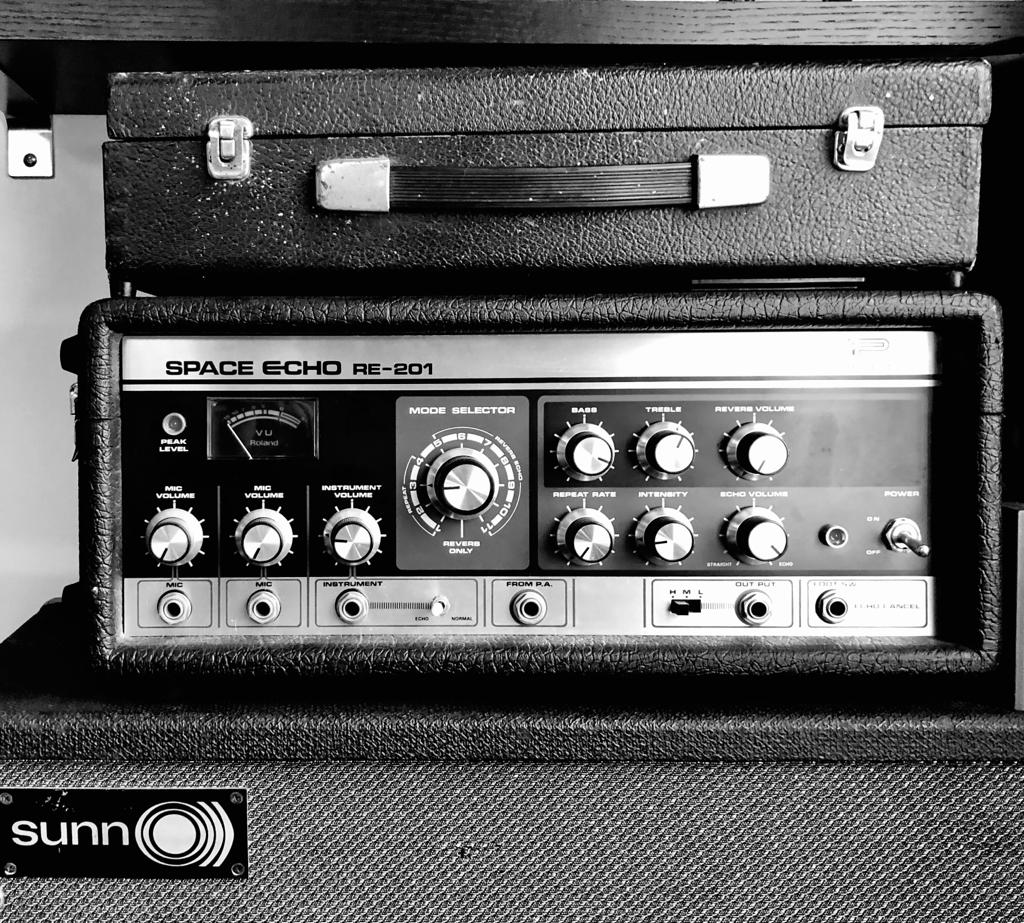
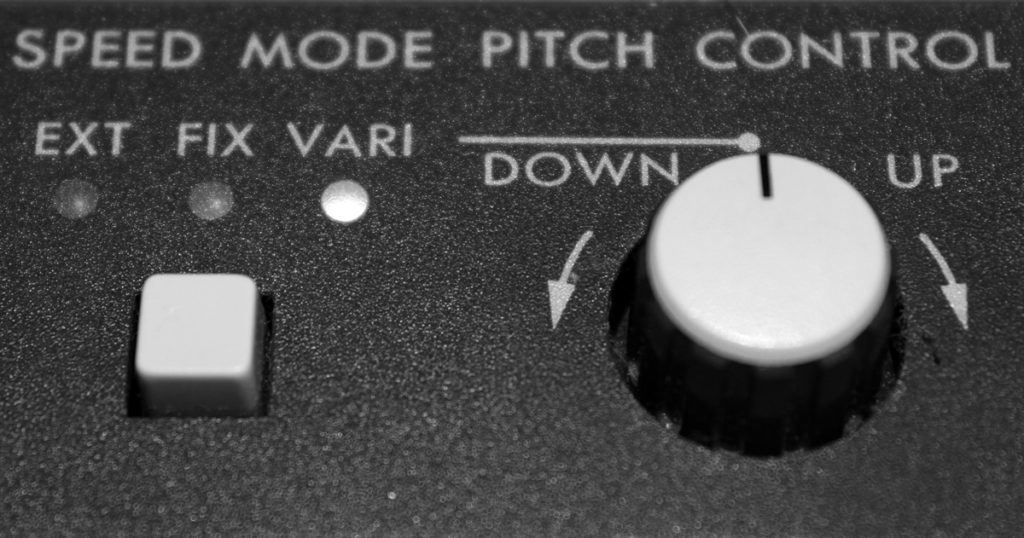
Varispeed is your best friend
Key is massively important to timbre. It changes the feel of a track even if you play it in the exact same tempo. Every musical combination of notes has been used a gazillion times in western music. This is why Aaron Copland’s “four elements” are important: rhythm, melody, harmony, and tone. Three musical elements plus tone. Tone is altered dramatically by the key and music can be infinitely unique and interesting whenever those four principal elements are harmonious. Whenever I work on a piece of music, I’ll move around things until I find the “right” key, which in essence to me is the one that gives me the nicest tone. I’ve gone as far as changing the key of a song in a live setting based on how the sub-bass is reacting in a particular room. With all that said: enter varispeed.
Varispeed is a feature of tape-based audio recorders that allows for both the tempo and pitch of a recording to be raised or lowered through the use of a pitch or speed control on the recorder. It is also emulated digitally in many DAWs. For example, Ableton Live allows for both tempo and pitch elements to be altered independently of each other. Many artists utilize varispeed to manipulate sounds in different ways. DJs, for example, can utilize varispeed to beatmatch tracks. It’s a great tool.
For ambient music, it is amazing how a little bit of pitch-shifting can make a sound or loop ten times more interesting. One of my favorite tricks in the studio when I’m working on ambient music is to make a loop in real-time with different effect pedals and hardware, record it, then varispeed down the entire recording by a few intervals. Everything feels so much sludgier and syrupy as a result.
Of course, this technique requires you to understand some basic music theory, as varispeeding will change the key of the loop. For example, if you varispeed (digitally) by -200 cents and your loop is in the key of D major, the resulting new loop will be in the key of C major, as you’ve dropped one whole step. It is important to understand basic harmony principles in order to not make a bloody tonal mess. Understanding and identifying the key signature of a loop is critical, particularly before you start processing it. Keeping track of it, as it morphs, is also really important.
Adding Reverb to a Track Ambient Does Not Make
A few years ago, I attended the AES conference in New York with a few engineer friends and ambient producers. There was a lecture put together by a respected audio publication on ambient music, so we thought, well, what the hell, we are already here, let’s check it out! To our surprise, one of the first things this lecturer said was: “To make ambient, just take a piano sound and add reverb to it” —and he proceeded to utilize a terrible sounding piano sample and throw some long reverb to it. We couldn’t believe what we were hearing; it’s possibly one of the worst pieces of advice I’ve heard in a long, long time!
Adding reverb to a track does not make it ambient. This is important to remember. I’ve done quite a few tracks with very little to no reverb on them. For example, “Vasastan” off Sirimiri, on Umor Rex.
Another example would be this collaboration with the lovely Julianna Barwick for the THESIS series. I remember producing this particular song with barely any reverb on the vocals. Julianna is known for singing through large reverbs, creating ethereal choir-like sacred hymns. I thought it’d be interesting to have some bare singing going through other effects (like loop pedals and delays) to achieve an ethereal vibe. As I worked with her, I discovered the etherealness of Julianna’s music comes a lot from the gossamer way she can sing. Her vocal placement is absolutely incredible, the way she is able to affect her voice and project it in a multitude of ways to change its tone is really inspiring.
Ambient is not about the actual effects used but about the atmosphere and feeling one can create with whatever tools at one’s disposal. Reverb is not a shortcut, even if it appears that way. Let’s not forget that.
Support Independent Media
Music, in-depth features, artist content (sample packs, project files, mix downloads), news, and art, for only $3.99/month.

